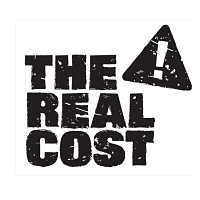They're Not “Poor,” but 31% of California Households Can't Afford Basic Needs

Around 15.9% of California households are below the official Federal Poverty Level (PVL), but a new report from United Way says that number vastly understates the struggle people undergo at the lower end of the economic scale.
Researchers for “Struggling to Get By: The Real Cost Measure in California 2015” calculate that 3.2 million California households (31%) lack sufficient income to cover the basic costs of living. That’s even higher than the 23.4% Supplemental Poverty Measure for California used by the U.S. Census Bureau to measure additional cost-of-living factors.
United Way uses something it calls “Real Cost Measure,” which adds housing costs, transportation, child care, taxes, health care and other family needs to the standard cost of food, which has tended to rise slower than the other factors. It also takes into account “race/ethnicity, gender, nativity, occupational type, marital status, educational attainment, employment status, housing type and more.”
The report uses 1,100 different household configurations, analyzes figures in the context of individual counties or similar locales and bores down into neighborhood census figures.
The report also applied the Elder Index as refined at the UCLA Center for Health Policy Research and the Insight Center for Community Economic Development, but in the end found that households of seniors struggled at the same 31% rate.
Not surprisingly, households headed by noncitizens fared badly. Sixty percent struggled to pay their bills, compared to 25% of native born citizens and 36% of naturalized citizens. Households of color did poorly. Fifty-one percent of Latino households, 40% of African American households and 28% of Asian households all fell short of the mark.
Fifty-one percent of households with children under the age of 6 fail to meet the Real Cost Measure, but kids do better in households maintained by a married couple. Sixty-four percent of homes households headed by single mothers earn less money than the Real Cost Measure, compared to one-fourth of households with a married couple and kids.
The largest impact on Real Cost Measure is housing, which consumes more than 50% of income of Californians who are below the mark. Housing costs gobble up 80% of household incomes below the Federal Poverty Level. The report offers a number of suggestions for helping people who are struggling, but its comments on housing reflect the frustration of not having any real good solutions in general that haven’t already been kicked around and down the road.
“It is not clear what strategies might work best to help struggling households better afford housing,” the report says. “While it is not easy to see how to reduce the housing burden for struggling households, a good start may be to acknowledge a few key points,” which it does. But after giving a nod to more renter tax credits and federal housing subsidies, the report falls silent.
The report details dozens of strategies for combating poverty—some new and others developed over the years—but their likelihood of success seems limited by a societal attitude best expressed in one of the quotes accompanying the report.
Dom Hélder Câmara, Brazil’s Catholic archbishop of Olinda and Recife who died in 1999, said, “When I give food to the poor, they call me a saint. When I ask why the poor have no food, they call me a communist.”
Forbes, which advocates for the rich, ran a piece last week from former Republican California Assemblyman Chuck DeVore that denounced subsidies and other assistance for the poor promoted by the United Way report.
He wrote, “Advocates for the poor would be well-advised to look first to examining policies that create artificial scarcity in housing markets. As with the ongoing student loan/college tuition fiasco, subsidizing demand with taxpayer money without first allowing supply to increase is only a recipe for a costly, overheated market.”
–Ken Broder
To Learn More:
New Report Shows Millions of Californian Families Struggle to Afford Basic Needs (by David Dexter, California Pan-Ethnic Health Network)
New Study: 40 Percent of Cali’s Black Families Are $10,000 to $30,000 Short of What They Need to Get (by Tanu Henry, Los Angeles Sentinel)
A Third of California Households Can't Afford Basic Needs; Government Is a Big Reason Why (by Chuck DeVore, Forbes)
The Kids Are Not Alright in California (by Ken Broder, AllGov California)
Struggling to Get By: The Real Cost Measure in California 2015 (United Way) (pdf)
- Top Stories
- Controversies
- Where is the Money Going?
- California and the Nation
- Appointments and Resignations
- Unusual News
- Latest News
- California Forbids U.S. Immigration Agents from Pretending to be Police
- California Lawmakers Urged to Strip “Self-Dealing” Tax Board of Its Duties
- Big Oil’s Grip on California
- Santa Cruz Police See Homeland Security Betrayal in Use of Gang Roundup as Cover for Immigration Raid
- Oil Companies Face Deadline to Stop Polluting California Groundwater





